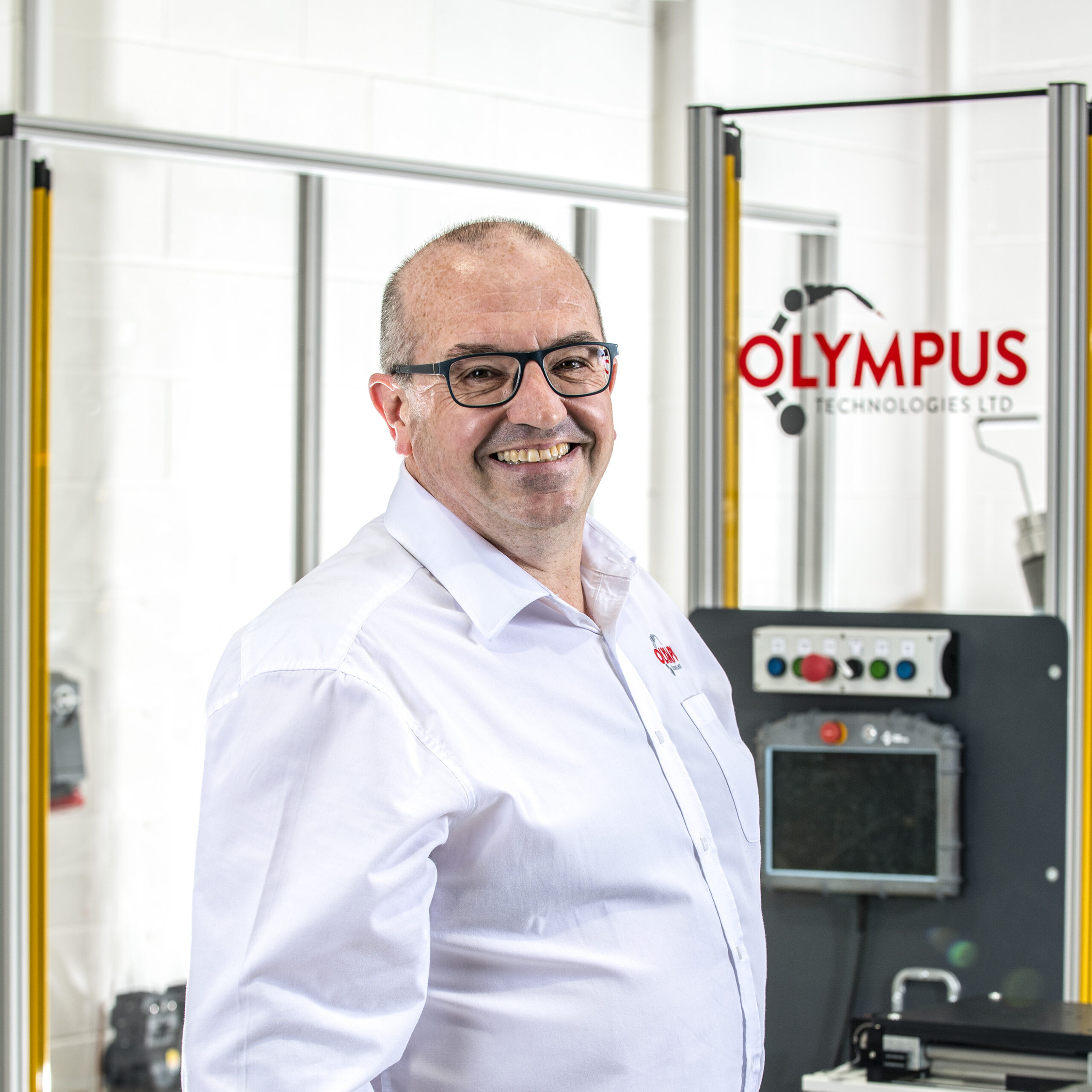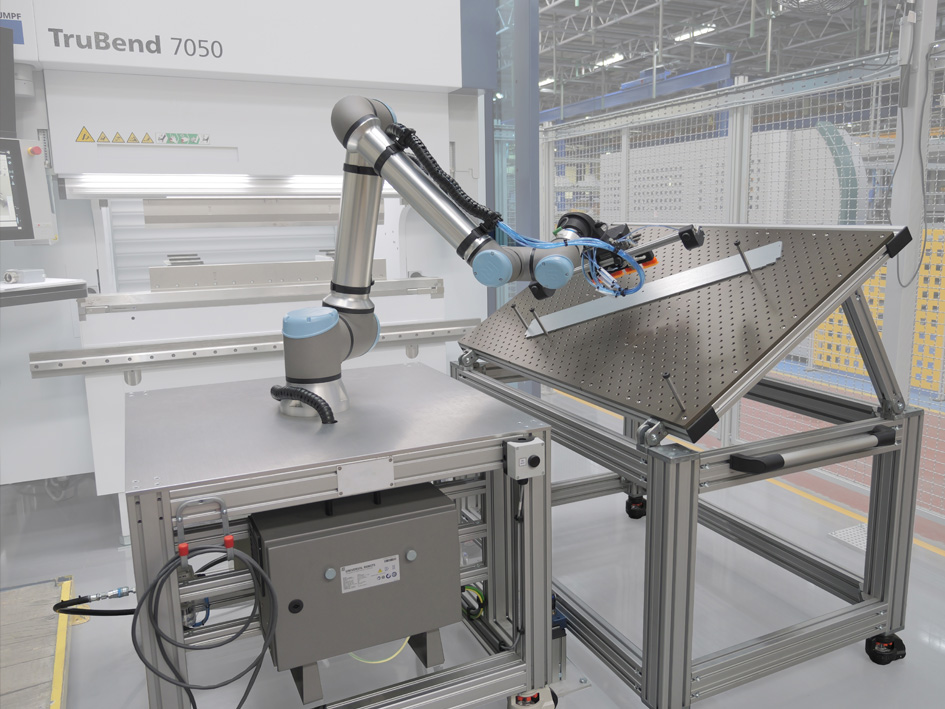Why CNC Machine Tending Deserves Attention
CNC machine tending is an essential part of modern manufacturing. As many manufacturers pursue flexible automation to meet rising production goals, effective robotic machine tending becomes key to reducing labor costs, increasing throughput, and delivering finished parts with enhanced accuracy.
Despite its many benefits, robotic automation only delivers value when implemented correctly. Without proper planning, your investment in machine tending automation can cause unnecessary downtime, safety risks, or higher overall cost. Let’s explore five common errors in CNC machine tending and how to avoid them.
What Is CNC Machine Tending?
CNC machine tending involves loading and unloading raw material, finished parts, or tools from CNC machinery, often with the help of machine tending robots. Traditionally done as manual machine tending, this process is now largely automated, reducing human error and minimising manual intervention.
Today’s systems manage tasks like:
- Feeding materials into milling machines or CNC lathes
- Extracting and sorting completed parts
- Inspecting items via vision systems
- Resetting the CNC cycle
These robotic machines serve industries ranging from injection molding to aerospace. Whether working with one machine or a multi-unit cell, robotic tending is well suited for demanding, repetitive tasks.
1. Failing to Assess Automation Readiness
A critical misstep is assuming your existing equipment, layout, and personnel are ready for automation. Many teams install tending robots without verifying that machines, safety systems, or space configurations are compatible.
How to Avoid It
Begin with an automation readiness audit. Evaluate:
- Compatibility with current CNC machines
- Availability of safety features for close proximity operations
- Opportunities for custom integrations (e.g. light curtains or sensors)
- Workflow spacing on the factory floor
- Familiarity of your CNC technicians with robotic automation
This upfront assessment reduces deployment friction and supports your business goals.
2. Underestimating Operator Training
Even the best robot can fail without the support of trained machine operators and skilled workers. Poor training leads to misconfigurations, inefficiency, or downtime from over-reliance on manual intervention.
How to Avoid It
Provide hands-on training that includes:
- Navigation of HMIs and CNC program adjustments
- Familiarity with safety protocols for collaborative robots
- Troubleshooting skills for unexpected process disruptions
Upskilling your team ensures long-term success and stability in your machine tending operations.
3. Ignoring Preventive Maintenance
Even highly reliable machine tending robots require regular care. Waiting until systems fail is not only costly but disrupts your entire production process.
How to Avoid It
Establish a preventive maintenance schedule covering:
- Regular checks on robotic arms, grippers, and vision systems
- Weekly evaluations of tooling wear and calibration
- Regular software updates for systems like Universal Robots
This proactive approach enhances product quality, lowers repair bills, and sustains increased efficiency across operations.
4. Overlooking Safety and Risk Planning
Implementing robotic machine tending without a full safety review can jeopardise your team and breach regulatory requirements. This is especially crucial in setups involving human-robot collaboration or close proximity operation.
How to Avoid It
Conduct formal risk assessments with a focus on:
- Use of light curtains, barriers, or enclosure systems
- Emergency stop buttons and safety signage
- Adherence to payload limits and deployment time guidelines
- Programming of safety features and fail-safes in collaborative robots
Prioritising improved safety from the start reduces liability and boosts worker confidence.
5. Choosing the Wrong Automation Solution
Not every CNC machine or production setup needs the same type of robotic automation. A mismatch can lead to poor performance and inflated costs without the benefit of increased productivity.
How to Avoid It
Align your solution to your production needs:
| Production Context | Best Automation Choice |
|---|---|
| High-mix, low-volume | Collaborative robots for flexibility |
| High-volume, static setup | Industrial robots for output |
| Tight tolerances, inspection | Robots with advanced vision systems |
By matching robot type with task and environment, you can reduce costs and ensure optimal deployment.
How Robotics Transforms CNC Automation
Robotic tending improves efficiency, consistency, and scalability in CNC automation. By handling repetitive tasks, robots support skilled labor and allow staff to focus on higher-value work. Automated systems also help meet rising demands while maintaining product quality and operational efficiency.
Many companies start with one machine and scale up with ongoing support from automation experts - a strategy that keeps operations competitive over time.
A Smart CNC Automation Strategy
Successful machine tending automation begins with planning. A phased rollout should include:
- Reviewing your current manual machine workflow
- Defining goals like reduced labor costs or defect reduction
- Choosing compatible robots and existing equipment
- Training both CNC technicians and machine operators
- Rolling out automation across teams or shifts incrementally
This minimizes disruption and supports steady improvement.
Keys to Long-Term Automation Success
To maintain performance gains:
- Track metrics like uptime, yield, and throughput
- Hold regular check-ins with your automation experts
- Foster communication between engineers and floor teams
- Use feedback to fine-tune integrations and process control
These practices help extend the value of your investment.
Safety is Crucial to Machine Tending Automation
From collaborative robots to heavy-duty systems, every robotic machine must meet strict safety standards. Protecting workers and staying compliant go hand-in-hand with system longevity.
Standard precautions include:
- Light curtains and presence scanners
- Emergency stop functions in easy reach
- Secure zones with fences or lockouts
- System power-down during faults or pauses
Embedding safety early on supports both productivity and peace of mind.
Evaluating ROI for Robotic Tending
Done right, robotic tending pays off—often within 12 to 24 months.
Key Costs
- Equipment, software, and custom integrations
- Training for operators and ongoing maintenance
Top Benefits
- Reduced labor costs
- Faster production and fewer delays
- Increased efficiency with fewer errors
- Better safety and product quality
If you're managing large batches or complex tasks, the case for robotic machine tending is fairly simple.
What’s Next: Evolving Machine Tending Trends
The future of CNC automation is smarter and more connected. Expect innovations like:
- AI-powered diagnostics and predictive maintenance
- Integration with digital twins for simulation and testing
- Smarter vision systems for adaptive alignment
- Intuitive robot programming for faster ramp-up
These technologies help manufacturers stay agile while remaining competitive in evolving markets.
Final Thoughts: Avoiding Pitfalls for Long-Term CNC Success
Avoiding these common machine tending mistakes ensures a smoother, safer, and more productive automation journey. With thoughtful planning, skilled teams, and the right robotic automation tools, your CNC environment will thrive in the face of modern manufacturing demands.
FAQs
What are the most common mistakes in CNC machine tending?
The top five include poor automation readiness, lack of operator training, neglecting maintenance, ignoring safety, and choosing the wrong automation system. Each can disrupt your production process and drive up overall cost.
Is robotic machine tending worth it for small operations?
Yes. Even one machine with repetitive steps can benefit from automation. With the right solution, you’ll see gains in product quality, reduced errors, and lower labor costs.
How do collaborative robots improve machine tending?
Collaborative robots are ideal for tasks that require human interaction or quick setup. They help balance safety with efficiency in close proximity operations, especially in manual machine environments.
What kind of CNC machines benefit most from robotic tending?
Milling machines, CNC lathes, and multi-axis systems are all strong candidates—particularly when combined with vision systems or used in industries like injection moulding.














